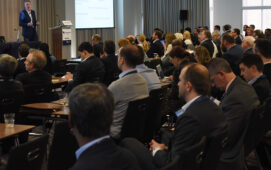Oracle caused a bit of excitement at the end of last week when it made an unsolicited bid for BEA Systems. BEA’s rejected it of course, saying it undervalues the company. All standard procedure. We’ll see what Oracle’s next move is. But if the transaction does happen, it will bring together some useful technologies that have merit in the world of low latency.
First, a bit of background: BEA has for many been an acquisition target for some time, and one of its significant investors, Carl Icahn, has been pushing for a sale. The signs are that the company’s legacy business – the Tuxedo transaction manager and Weblogic application server suite – is beginning to get eroded (IBM virtually gives its Websphere offering away, and the open source Jboss is increasingly credible). And it’s admitted that is hasn’t done a great job in articulating its vision – the Aqualogic SOA offering, etc. – so some sales misteps have occurred.
Oracle continues to be aggressive in its acquisition strategy and the pitch for BEA is probably opportunistic land grab. Folding BEA into Oracle’s newly re-organized Fusion middleware business will extend the company’s footprint and may round out some product and expertise holes.
Timesten and Tangosol are a couple of acquisitions made by Oracle over the past couple of years. It acquired in-memory database vendor Timesten in 2005 and while it never exploited its traction in the securities markets, it remains in the arsenal of Oracle database products. Its acquisition this year of Tangosol – a data fabric player – complements its Fusion middleware offerings.
For its part, BEA has been quietly working on a complex event processing offering, dubbed Weblogic Event Server. It’s unclear just how low in latency terms this offering can play at – at present it’s being pitched into the SOA world, although that’s one making good progress in terms of performance – and components like Timesten and Tangosol can play a part there.
Until next time … here’s some great music. [tags]bea,bea systems,weblogic,aqualogic,tuxedo,oracle,in memory database,timesten,tangosol,fusion middleware,datagrid, soa[/tags]
Subscribe to our newsletter




